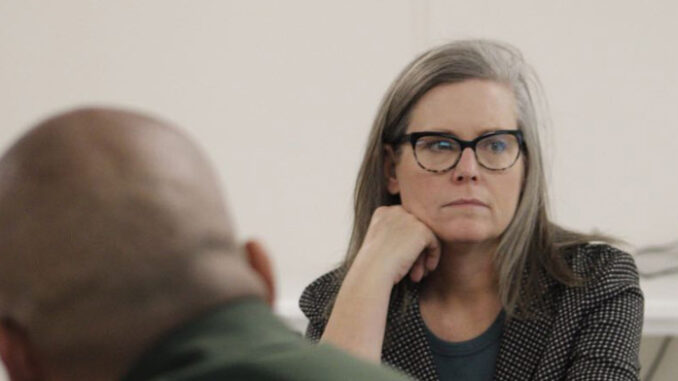Arizona’s top officials, including Superintendent Tom Horne, Senate President Warren Petersen, and House Speaker Ben Toma, defend the Empowerment Scholarship Account (ESA) program, calling out Governor Katie Hobbs for making false claims. While Hobbs asserts that the ESA poses a budgetary threat, data reveals the state’s education budget is on track, even projecting a year-end surplus of around $77 million. The Arizona Daily Independent article states:
Each year, the state estimates the total K-12 student counts and budgets the money needed for all the school funding formulas. The Department of Education reported on October 4 that the budget is currently on pace to have a year-end surplus of roughly $77 million. This surplus reflects generally cautious budget estimates. As it relates to the Empowerment Scholarship Account (ESA) Program, the budget estimate of 68,000 total users is within one percent of the current program enrollment.
Horne emphasized that the ESA program, when accounting for savings from students switching from public schools, results in an overall savings of $72 million below the projected education budget. According to Horne:
“The Governor’s calculation is in error. She is counting the $7,200 paid for each ESA student without offsetting the $13,000 paid per student that would otherwise be spent for that student to attend a public school,” said Horne. “The overall numbers bear this out as the expenditures for all public school spending, including the ESA program are $72 million below budget.”
Petersen highlighted the importance of educational freedom, hinting the debate over ESAs might be a political tactic for upcoming legislative sessions. The Common Sense Institute clearly shows a growing preference for alternative schooling options, noting a significant rise in ESA enrollments and a decrease in public school attendance, ultimately leading to substantial savings in state funds.
The Common Sense Institute has found “that enrollment in the state’s public schools had declined between 30,000 and 70,000 students relative to pre-pandemic projections. These enrollment declines generate substantial state funding savings and are consistent with a nationwide shift in preferences by parents and children for education. Between 2019 and 2022, despite unprecedented investment in Arizona’s public K-12 schools, parents have shown increased interest in alternatives to their assigned district school. Arizona’s existing school choice model gave parents flexibility to find an option that helped their child continue to learn during the pandemic-era classroom disruptions.”
Read the full story HERE

